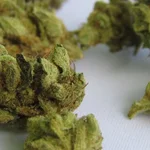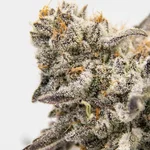The Science Behind Cannabis
Cannabis, also known as marijuana, is a plant that contains more than 100 different compounds called cannabinoids. The two most well-known cannabinoids are delta-9-tetrahydrocannabinol (THC) and cannabidiol (CBD), which have different effects on the brain and body. THC is the psychoactive compound that gives users the “high” associated with cannabis use, while CBD is non-psychoactive and has potential therapeutic benefits.
Cannabis plants also contain terpenes, which are responsible for the plant’s aroma and flavor. Terpenes can also work synergistically with cannabinoids to produce different effects.
How THC Works
THC works by binding to receptors in the brain and body that are part of the endocannabinoid system, which plays a crucial role in regulating a variety of physiological processes. When THC binds to these receptors, it can alter brain function, leading to effects such as euphoria, altered perception, and increased appetite.
How CBD Works
CBD does not bind to the same receptors as THC, but it can still have a variety of effects on the body. It has been shown to have anti-inflammatory, analgesic, and anxiolytic properties, among others. CBD can also interact with other receptors in the brain and body, such as the serotonin and vanilloid receptors, to produce its effects.
Cannabis Operations
Cannabis operations refer to the cultivation, processing, and sale of cannabis products. As the legalization of cannabis continues to spread across the world, there has been a growing demand for high-quality cannabis products. However, the process of growing and producing cannabis products can be complex and requires extensive knowledge and expertise.
Cultivation
Cannabis cultivation involves growing the plant in a controlled environment to produce high-quality flowers. This process requires careful attention to lighting, temperature, humidity, and nutrient levels to ensure optimal plant growth. Different strains of cannabis may require different growing conditions, and growers must be able to adjust their methods accordingly.
Processing
Once the cannabis plants have been harvested, they must be processed to produce the final products. This can involve drying, curing, trimming, and extracting the cannabinoids and terpenes from the plant material. Different extraction methods can produce different types of extracts, such as oils, tinctures, and concentrates.
Sale
The sale of cannabis products can be highly regulated, and businesses must comply with local laws and regulations. Cannabis dispensaries must be licensed to sell cannabis products and may be subject to inspections and audits to ensure compliance. In addition, businesses must be able to market their products effectively to attract customers and build a loyal customer base.
Misconceptions and Gaps in Understanding
Despite the growing popularity of cannabis, there are still many misconceptions and gaps in understanding surrounding the plant and its effects. Some people believe that cannabis is a harmful drug with no medical benefits, while others may assume that all strains of cannabis have the same effects.
It is important to educate people about the science behind cannabis and the importance of responsible use. Cannabis can have potential therapeutic benefits, but it can also have negative effects if not used responsibly. By understanding the science behind cannabis and how it is produced, people can make more informed decisions about their use of cannabis products.
Common Misconceptions
- Cannabis is a gateway drug that leads to harder drug use
- All strains of cannabis have the same effects
- Cannabis has no medical benefits
- Cannabis is highly addictive and can cause long-term damage to the brain
Addressing Misconceptions
By providing accurate information about the science behind cannabis and the potential benefits and risks of use, people can make more informed decisions about their use of cannabis products. Education campaigns can help to dispel common myths and misconceptions and encourage responsible use of cannabis.
Conclusion
In conclusion, cannabis science and operations are complex and require extensive knowledge and expertise. By understanding the science behind cannabis and how it is produced, people can make more informed decisions about their use of cannabis products. Responsible use of cannabis can have potential therapeutic benefits, but it is important to address common myths and misconceptions to avoid potential negative effects. As the legalization of cannabis continues to spread, it is important to promote education and responsible use to ensure the safe and effective use of this plant.












